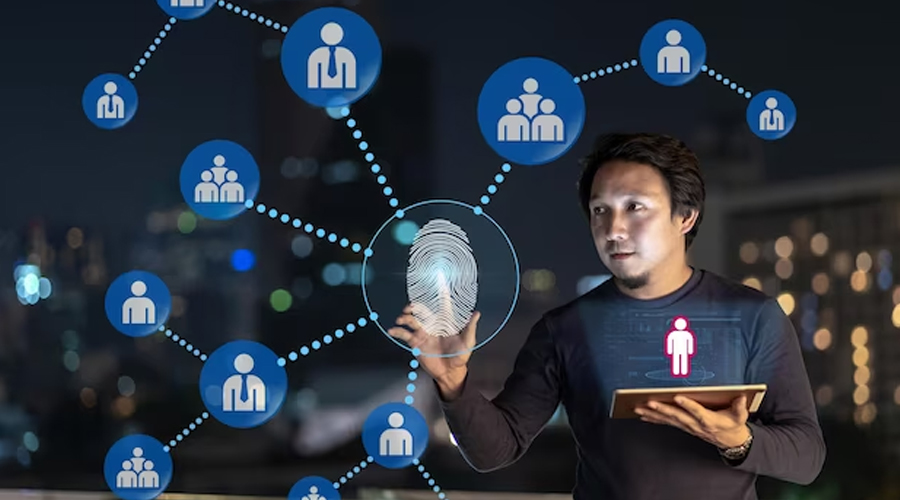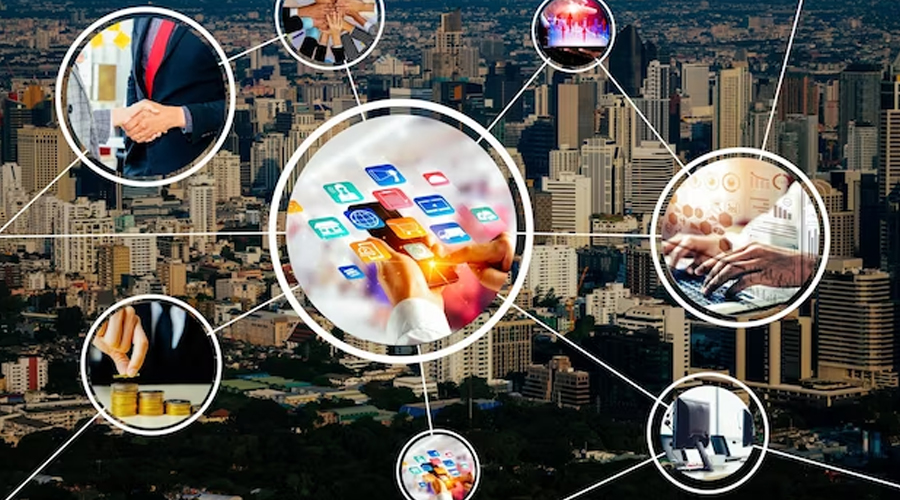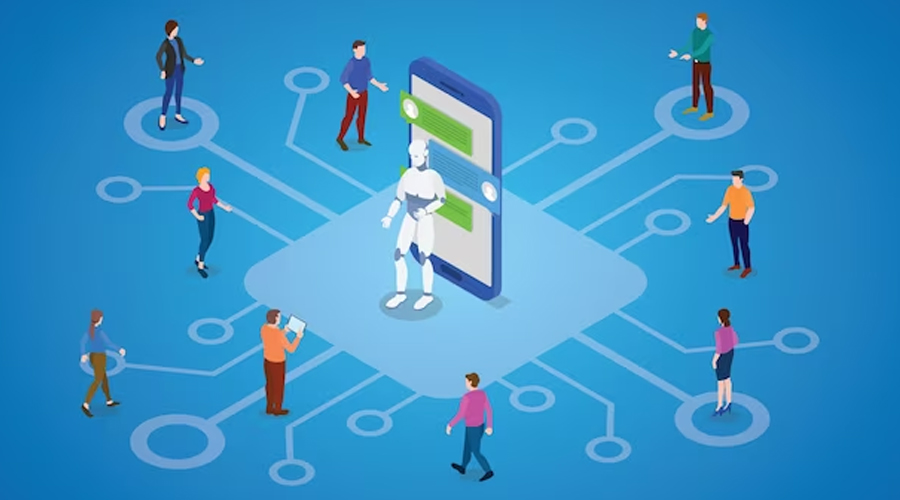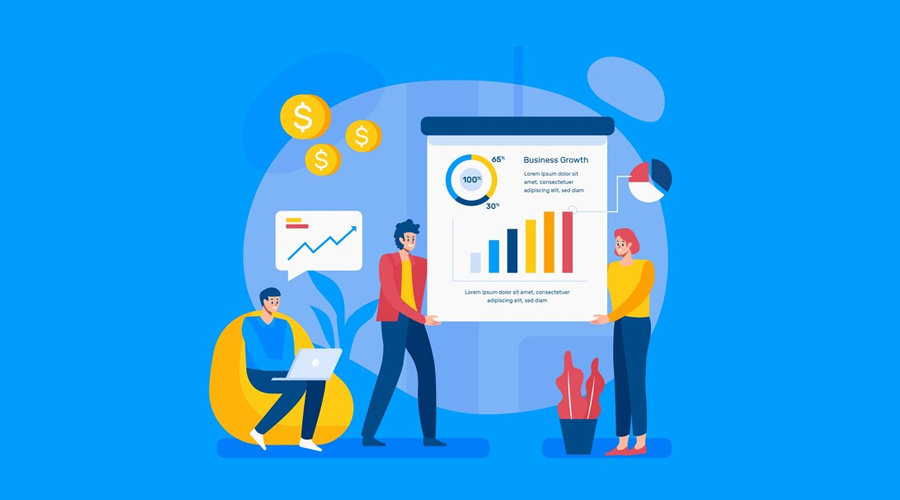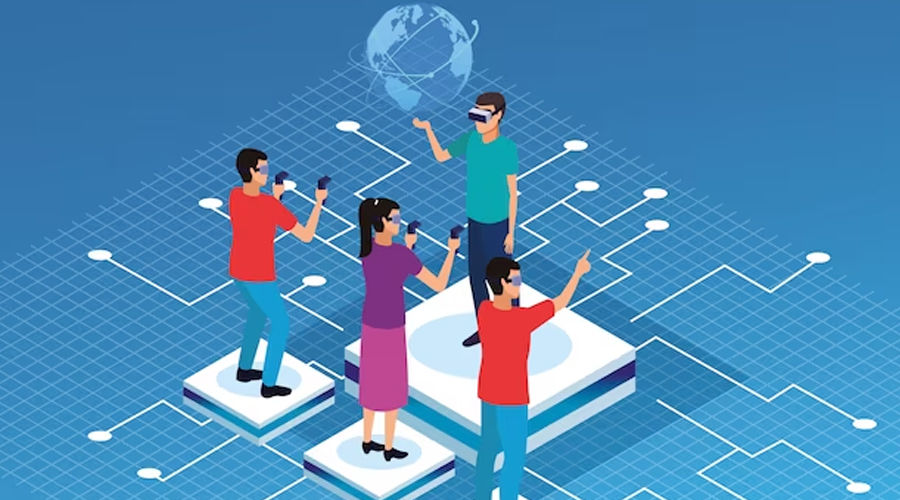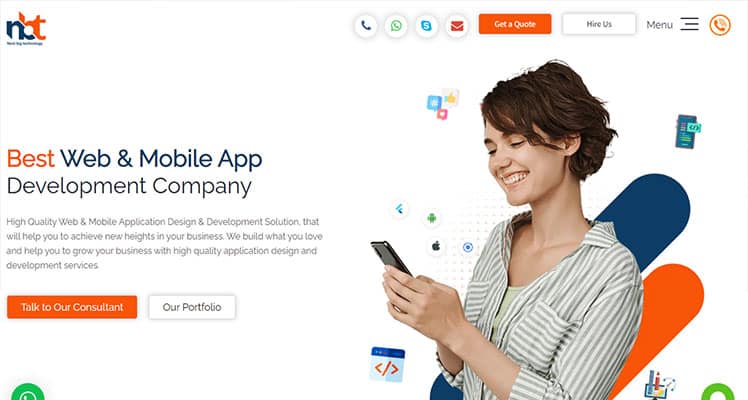Table of Contents
Citizen portal development Services
In today’s digital age, the importance of effective citizen engagement cannot be overstated. Governments around the world are increasingly turning to technology to bridge the gap between citizens and public services. One such innovative solution gaining traction is citizen portal development services. These platforms serve as centralized hubs where citizens can access government information, services, and interact with authorities seamlessly.
Empowering Citizens with Information: Citizen portal development services empower citizens by providing easy access to essential information. Whether it’s learning about government initiatives, policies, or upcoming events, citizens can stay informed with just a few clicks. By centralizing information on a user-friendly platform, governments can ensure transparency and promote accountability.
Streamlining Service Delivery: Gone are the days of long queues and cumbersome paperwork. Citizen portals streamline service delivery by offering online access to a wide range of government services. From applying for permits and licenses to paying taxes and utility bills, citizens can complete transactions conveniently from their homes or offices. This not only saves time and resources but also enhances overall efficiency.
Facilitating Two-Way Communication: Effective governance requires open communication channels between citizens and authorities. Citizen portals facilitate two-way communication by providing avenues for feedback, suggestions, and complaints. Whether it’s reporting potholes on roads or providing input on proposed policies, citizens can actively participate in the decision-making process. This fosters a sense of ownership and strengthens the bond between the government and its constituents.
Ensuring Accessibility and Inclusivity: Accessibility is a key aspect of citizen portal development services. These platforms are designed to be accessible to all citizens, regardless of their physical abilities or technological proficiency. Features such as language localization, text-to-speech functionality, and user-friendly interfaces ensure inclusivity and cater to diverse demographics. By breaking down barriers to access, governments can ensure equal participation and representation for all citizens.
Enhancing Data Security and Privacy: With the increasing digitization of government services comes the need for robust data security measures. Citizen portal development services prioritize data security and privacy to safeguard sensitive information. Implementing encryption protocols, strict access controls, and regular security audits help mitigate the risk of data breaches and cyber threats. By earning citizens’ trust through secure practices, governments can encourage greater engagement and adoption of digital services.
Driving Innovation and Continuous Improvement: Citizen portal development services are not static entities; they evolve with the changing needs and expectations of citizens. Governments can leverage analytics and user feedback to drive innovation and continuously improve the portal experience. Whether it’s integrating new features, optimizing workflows, or expanding service offerings, these platforms adapt to stay relevant and effective in the long run.
How to Create a Citizen portal development
In today’s digital age, governments worldwide are increasingly embracing technology to enhance citizen engagement and streamline public services. One such innovative solution is the development of a citizen portal—a centralized platform that offers citizens easy access to government information, services, and resources online. Building a citizen portal requires careful planning, collaboration, and a user-centric approach. In this guide, we’ll outline the essential steps to create a citizen portal that meets the needs of both government agencies and citizens.
- Define Objectives and Scope: Begin by clearly defining the objectives of the citizen portal and the services it will provide. Identify key stakeholders, including government departments, agencies, and citizens, to gather requirements and understand their needs. Determine the scope of the project, outlining the features and functionalities the portal will offer.
- Conduct User Research: Conduct thorough research to understand the needs, preferences, and challenges faced by citizens when interacting with government services. Gather feedback through surveys, interviews, and focus groups to identify pain points and opportunities for improvement. Use this insight to design a user-friendly and intuitive portal interface.
- Choose the Right Technology Stack: Selecting the appropriate technology stack is crucial for the success of the citizen portal. Consider factors such as scalability, security, and integration capabilities when choosing development tools and frameworks. Collaborate with IT experts to ensure compatibility with existing systems and infrastructure.
- Design a User-Centric Interface: Develop a user-centric interface that prioritizes simplicity, accessibility, and ease of navigation. Utilize responsive design principles to ensure compatibility across various devices and screen sizes. Incorporate intuitive search functionality, clear navigation menus, and personalized user dashboards to enhance the user experience.
- Implement Robust Security Measures: Security is paramount when developing a citizen portal, as it involves handling sensitive citizen data. Implement robust security measures, including data encryption, secure authentication mechanisms, and regular security audits. Comply with relevant data protection regulations to safeguard citizen privacy and confidentiality.
- Integrate Backend Systems: Integrate the citizen portal with backend systems and databases to enable seamless data exchange and information sharing across government departments. Implement APIs and middleware solutions to facilitate interoperability and streamline workflows. Ensure data accuracy and consistency through data validation and synchronization mechanisms.
- Test and Iterate: Thoroughly test the citizen portal across different environments and user scenarios to identify and address any issues or bugs. Conduct usability testing to gather feedback from real users and make iterative improvements based on their suggestions. Continuously monitor performance metrics and user engagement to optimize the portal over time.
- Provide Ongoing Support and Maintenance: Once the citizen portal is launched, provide ongoing support and maintenance to ensure its smooth operation. Establish a dedicated support team to address user inquiries, troubleshoot technical issues, and provide assistance as needed. Regularly update the portal with new features, content, and security patches to enhance its functionality and relevance.
Why Should You Go for Citizen portal development
In today’s digital age, the importance of citizen engagement cannot be overstated. As communities strive for transparency, accessibility, and efficiency in governance, the role of citizen portals has become increasingly significant. These online platforms serve as gateways for citizens to interact with their government, access services, and participate in decision-making processes. If you’re wondering why you should consider investing in citizen portal development, here are some compelling reasons:
- Improved Accessibility: Citizen portals break down barriers to accessing government services and information. By providing a centralized online platform, citizens can conveniently access a wide range of services, from paying bills to accessing public records, anytime and anywhere with an internet connection.
- Enhanced Transparency: Transparency is the cornerstone of good governance. Citizen portals offer transparency by making government information readily available to the public. From budgets and expenditures to policies and regulations, citizens can access valuable information to hold their government accountable and make informed decisions.
- Efficient Service Delivery: Citizen portals streamline service delivery by digitizing and automating various government processes. Whether it’s applying for permits, licenses, or submitting forms, citizens can complete tasks online without the need for physical visits or paperwork. This not only saves time and resources for both citizens and government agencies but also improves overall efficiency.
- Empowering Citizen Participation: Citizen portals empower citizens to actively participate in the democratic process. Through features such as online forums, surveys, and feedback mechanisms, citizens can voice their opinions, provide input on policies, and engage in meaningful discussions with government officials and fellow community members.
- Data-Driven Decision Making: Citizen portals generate valuable data insights that can inform evidence-based decision-making. By analyzing user interactions and feedback, government agencies can gain valuable insights into citizen needs, preferences, and concerns, allowing them to tailor policies and services to better serve the community.
- Fostering Trust and Accountability: By promoting transparency, accessibility, and citizen participation, citizen portals help build trust between government institutions and the public. When citizens feel informed, heard, and involved in the decision-making process, it fosters a sense of accountability and strengthens the relationship between government and society.
- Cost-Effective Solution: Implementing citizen portals can lead to significant cost savings in the long run. By digitizing processes and reducing the reliance on paper-based systems, governments can streamline operations, reduce administrative overheads, and allocate resources more efficiently.
Market Prospects of Citizen portal development and Platforms
In today’s digital age, citizen portals have emerged as powerful tools for enhancing civic engagement, streamlining government services, and fostering transparency. These platforms serve as centralized hubs where citizens can access a wide array of information, participate in decision-making processes, and interact with their governments more effectively. As technology continues to evolve, the market prospects of citizen portal development and platforms are poised for significant growth and innovation.
Understanding the Market Dynamics: The market for citizen portal development and platforms is driven by several key factors. Firstly, there is a growing demand for digital solutions that enable governments to deliver services more efficiently and responsively to citizens. As expectations for seamless digital experiences rise, there is increasing pressure on governments to modernize their operations and provide user-friendly interfaces for interacting with public services.
Additionally, the rise of e-governance initiatives and the push towards digital transformation in the public sector have fueled the adoption of citizen portals. Governments worldwide are recognizing the importance of leveraging technology to improve governance, increase transparency, and enhance citizen participation. Citizen portals play a crucial role in this process by providing a unified platform for delivering services, disseminating information, and soliciting feedback from the public.
Market Trends and Opportunities: Several key trends are shaping the market for citizen portal development and platforms. One notable trend is the increasing focus on user-centric design and accessibility. Governments are prioritizing the creation of intuitive, user-friendly interfaces that cater to diverse populations, including individuals with disabilities and those with limited digital literacy. As a result, there is a growing demand for citizen portals that offer customizable features, multi-language support, and responsive design across various devices.
Another significant trend is the integration of advanced technologies such as artificial intelligence (AI), machine learning, and data analytics into citizen portals. These technologies enable governments to analyze vast amounts of data, automate routine tasks, and deliver personalized services to citizens. For example, AI-powered chatbots can provide real-time assistance to citizens, while predictive analytics can help governments anticipate and address emerging needs more effectively.
Furthermore, the market for citizen portal development is witnessing an expansion beyond traditional government agencies. Private sector companies, non-profit organizations, and community groups are increasingly investing in citizen engagement platforms to facilitate collaboration, advocacy, and social impact initiatives. This trend opens up new opportunities for vendors and developers to innovate and tailor their solutions to meet the diverse needs of different stakeholders.
Challenges and Considerations: Despite the promising outlook, the market for citizen portal development and platforms also faces several challenges and considerations. One key challenge is ensuring data security and privacy protection. Given the sensitive nature of the information handled by citizen portals, governments must implement robust security measures to safeguard against cyber threats, data breaches, and unauthorized access.
Moreover, achieving widespread adoption and user engagement remains a persistent challenge for many citizen portal initiatives. Governments must invest in comprehensive outreach and education efforts to raise awareness about the benefits of citizen portals and encourage active participation from all segments of society. Additionally, addressing digital divide issues and bridging the gap in access to technology infrastructure is essential to ensure that citizen portals are inclusive and accessible to all citizens.
Essential Features of a Citizen portal development
In our increasingly digital world, the concept of citizen portal development has become paramount in enhancing governmental interactions with citizens. These platforms serve as the gateway through which individuals can access various government services, information, and engage with public authorities efficiently. However, to ensure their effectiveness, certain essential features must be incorporated into their design and functionality. Let’s delve into these crucial components that contribute to the success of citizen portal development:
- User-friendly Interface: The foremost feature of any citizen portal is its ease of use. A user-friendly interface ensures that citizens, regardless of their technological proficiency, can navigate the platform effortlessly. Intuitive design elements, clear navigation menus, and straightforward instructions are imperative to enhance user experience.
- Secure Authentication Mechanism: Security is of utmost importance when dealing with sensitive citizen data. Implementing robust authentication mechanisms, such as multi-factor authentication and biometric verification, helps ensure the confidentiality and integrity of user information, safeguarding it from unauthorized access or cyber threats.
- Personalized User Profiles: Citizen portals should offer personalized user profiles, allowing individuals to customize their preferences, access history, and frequently used services. Tailoring the user experience based on individual needs fosters engagement and increases satisfaction with the platform.
- Comprehensive Service Catalog: A comprehensive service catalog is fundamental for citizen portals to serve their intended purpose effectively. It should encompass a wide range of government services, from applying for permits and licenses to accessing public records and making payments, all conveniently accessible within the platform.
- Seamless Integration with Government Systems: Integration with existing government systems and databases streamlines processes and eliminates redundancy. Seamless interoperability allows for real-time data exchange between different departments, facilitating quicker response times and enhancing overall efficiency in service delivery.
- Accessibility and Inclusivity: Citizen portals must adhere to accessibility standards to ensure inclusivity for all users, including those with disabilities. Incorporating features such as screen reader compatibility, text resizing options, and alternative text for images guarantees equal access to government services and information for everyone.
- Mobile Responsiveness: With the proliferation of smartphones and mobile devices, optimizing citizen portals for mobile responsiveness is essential. Responsive design ensures that users can access the platform seamlessly across various devices, enabling convenient interaction with government services anytime, anywhere.
- Feedback Mechanism: A feedback mechanism allows citizens to provide input, report issues, and suggest improvements, fostering transparency and accountability in governance. Regularly collecting and analyzing user feedback enables authorities to address concerns promptly and enhance the overall user experience.
- Data Privacy and Compliance: Compliance with data privacy regulations, such as GDPR and CCPA, is non-negotiable when developing citizen portals. Implementing robust data protection measures, secure data storage practices, and transparent privacy policies instills trust and confidence among users regarding the handling of their personal information.
- Continuous Maintenance and Updates: Citizen portal development is an ongoing process that requires regular maintenance and updates to address evolving user needs and technological advancements. Continuous monitoring, bug fixes, and feature enhancements ensure the platform remains relevant, reliable, and resilient over time.
Advanced Features Citizen portal development
In an era where digitalization has become the norm, citizen portal development stands at the forefront of enhancing government-citizen interactions. These platforms serve as the gateway to a plethora of services and information, catering to the diverse needs of the populace. As technology evolves, so do citizen portals, integrating advanced features to streamline processes and elevate user experience.
Let’s delve into the realm of advanced features that are shaping the landscape of citizen portal development:
- Personalized Dashboards: Gone are the days of generic interfaces. Advanced citizen portals employ personalized dashboards tailored to individual user preferences and needs. Through sophisticated algorithms, these portals analyze user behavior and present relevant information and services upfront, enhancing efficiency and user satisfaction.
- Multichannel Accessibility: Modern citizen portals recognize the importance of accessibility across various devices and platforms. Whether it’s desktops, smartphones, or tablets, citizens can seamlessly access services anytime, anywhere. Moreover, integration with social media channels and messaging platforms facilitates quick communication and engagement.
- Integration of AI and Chatbots: Artificial Intelligence (AI) and Chatbots are revolutionizing citizen engagement. Advanced citizen portals leverage AI-powered chatbots to provide instant support, answer queries, and guide users through complex processes. Natural Language Processing (NLP) capabilities ensure intuitive interactions, making government services more accessible to all.
- Data Analytics for Decision Making: Data is a goldmine of insights, and citizen portals harness its power through advanced analytics tools. By analyzing user behavior, feedback, and service usage patterns, governments can make informed decisions, optimize services, and anticipate future needs. Data-driven decision-making fosters efficiency and improves governance outcomes.
- Secure Authentication and Identity Verification: Security is paramount in citizen portal development. Advanced portals employ robust authentication mechanisms, including biometrics, Two-Factor Authentication (2FA), and blockchain-based identity verification. By ensuring data security and privacy, citizens can trust the platform with their sensitive information, fostering greater participation and engagement.
- Interactive Mapping and Geospatial Integration: Location-based services are integral to many government functions. Advanced citizen portals leverage interactive mapping and geospatial integration to provide location-specific information, such as service centers, polling stations, and infrastructure projects. Citizens can visualize data geographically, empowering them with localized insights and services.
- Real-time Updates and Notifications: Timely communication is key to keeping citizens informed and engaged. Advanced citizen portals employ real-time updates and notifications to notify users about important announcements, policy changes, or service disruptions. Whether through push notifications, emails, or SMS alerts, governments can ensure citizens stay informed and connected.
- E-Government Integration and Interoperability: Seamless integration with other e-government systems enhances the overall citizen experience. Advanced citizen portals interoperable with tax systems, healthcare databases, and public records facilitate cross-agency collaboration and data sharing. This integration eliminates redundancy, reduces bureaucracy, and enhances service delivery efficiency.
Citizen portal development Timelines
In today’s digitally-driven world, governments around the globe are embracing technology to enhance citizen engagement and service delivery. One of the key initiatives in this regard is the development of citizen portals, which serve as centralized platforms for citizens to access various government services and information. However, the development of such portals requires careful planning and adherence to timelines to ensure efficient delivery and maximum impact.
Understanding Citizen Portal Development Timelines
Citizen portal development timelines encompass the various stages involved in conceptualizing, designing, developing, testing, and deploying a citizen portal. These timelines can vary depending on factors such as the scope of the portal, complexity of functionalities, integration requirements, and available resources.
- Planning and Requirements Gathering: The initial phase involves comprehensive planning and gathering of requirements. This includes identifying the needs of citizens, defining the scope of the portal, outlining key features and functionalities, and setting project goals and objectives. Stakeholder consultations and user research are essential during this phase to ensure that the portal meets the diverse needs of the target audience.
- Design and Prototyping: Once the requirements are gathered, the next step is to design the user interface (UI) and user experience (UX) of the portal. This involves creating wireframes, mockups, and prototypes to visualize the layout, navigation flow, and interaction design. Feedback from stakeholders and usability testing help refine the design before proceeding to the development phase.
- Development and Integration: The development phase involves coding and building the backend infrastructure, frontend components, and integrating various modules and functionalities. This includes user authentication, data management, service integration (such as payment gateways or document verification systems), and ensuring compliance with security and accessibility standards.
- Testing and Quality Assurance: Rigorous testing is crucial to ensure the functionality, performance, security, and usability of the portal. This involves conducting various types of testing, including functional testing, usability testing, security testing, and performance testing. Any bugs or issues identified during testing are addressed and fixed promptly to maintain the quality of the portal.
- Deployment and Launch: Once the portal is thoroughly tested and validated, it is ready for deployment. This involves deploying the portal to production servers, configuring domain settings, setting up monitoring and analytics tools, and conducting final checks to ensure everything is functioning as expected. A phased rollout strategy may be adopted to minimize disruptions and ensure a smooth transition for users.
- Post-launch Support and Maintenance: The launch of the portal is just the beginning of its lifecycle. Ongoing support and maintenance are essential to address user feedback, implement updates and enhancements, monitor performance metrics, and ensure the security and reliability of the portal. Regular maintenance activities such as software updates, security patches, and performance optimizations help keep the portal running smoothly and efficiently.
Factors Influencing Citizen Portal Development Timelines
Several factors can influence the timelines for citizen portal development:
- Scope and Complexity: The complexity of features and functionalities included in the portal can significantly impact the development timelines. More complex portals may require additional time for design, development, and testing.
- Resource Availability: The availability of skilled resources, including developers, designers, testers, and project managers, can affect the pace of development. Adequate resource allocation is essential to ensure timely delivery.
- Technology Stack: The choice of technology stack and development frameworks can influence development timelines. Using proven technologies and tools can expedite development, while adopting new or unfamiliar technologies may require additional time for learning and implementation.
- Regulatory Compliance: Compliance with regulatory requirements and standards, such as data privacy regulations and accessibility guidelines, can add complexity and time to the development process. It is essential to ensure that the portal meets all applicable legal and regulatory requirements.
- Stakeholder Collaboration: Effective collaboration and communication among stakeholders, including government agencies, IT departments, vendors, and end-users, are crucial for streamlining the development process and addressing any challenges or issues that arise.
How Much Does It Cost to Build a Citizen portal development?

In today’s digital age, the concept of citizen portals has gained significant traction, offering governments a powerful tool to engage with their citizens and streamline various services. Whether it’s accessing public information, paying taxes, or applying for permits, citizen portals serve as a centralized platform to enhance communication and convenience. However, one question that often arises is, “How much does it cost to build a citizen portal?”
The cost of developing a citizen portal can vary significantly depending on various factors, including the complexity of the project, the features and functionalities required, the technology stack chosen, and the development team’s expertise. Let’s delve deeper into the key components that contribute to the overall cost:
- Feature Set: The features and functionalities integrated into the citizen portal play a crucial role in determining the development cost. Basic features such as user registration, authentication, and access to public information may be relatively straightforward to implement. However, more advanced features like online payment processing, document management, and interactive forums can increase development time and costs.
- User Interface (UI) and User Experience (UX): Creating an intuitive and visually appealing UI/UX design is essential for ensuring user engagement and satisfaction. Investing in UI/UX design can incur additional costs, especially if you opt for custom designs tailored to your specific requirements.
- Integration with External Systems: Citizen portals often need to integrate with various external systems and databases to access relevant data and provide seamless services. The complexity of these integrations can impact the overall development cost.
- Security: Ensuring the security of sensitive citizen data is paramount for any citizen portal. Implementing robust security measures, such as encryption, access controls, and regular security audits, adds to the development cost but is essential for safeguarding user information.
- Scalability and Maintenance: Building a citizen portal that can handle increasing user traffic and evolving requirements requires careful planning for scalability. Additionally, ongoing maintenance and updates are necessary to keep the portal running smoothly, which adds to the long-term costs.
- Technology Stack: The choice of technology stack, including programming languages, frameworks, and infrastructure, can influence both the development cost and the performance of the citizen portal. Opting for widely used and supported technologies may reduce development costs in the long run.
- Regulatory Compliance: Depending on the jurisdiction and the nature of services provided, citizen portals may need to comply with various regulations such as GDPR, HIPAA, or PCI DSS. Ensuring regulatory compliance adds complexity and may increase development costs.
- Project Management and Support: Effective project management and ongoing support are essential for the successful development and maintenance of a citizen portal. Investing in experienced project managers and dedicated support teams can add to the overall cost but is crucial for project success.
How to Create a Citizen portal development – Team and Tech Stack
In today’s digital age, governments worldwide are increasingly recognizing the importance of citizen engagement and participation. A citizen portal serves as a crucial interface between the government and its people, facilitating efficient communication, access to services, and fostering transparency. Developing a citizen portal requires a well-thought-out approach, encompassing both assembling the right team and selecting an appropriate tech stack. Let’s delve into the key steps involved in this process.
Understanding the Objective
Before diving into the development process, it’s essential to have a clear understanding of the objectives of the citizen portal. Whether it’s enhancing accessibility to government services, improving transparency, or fostering citizen engagement, defining the primary goals will guide the entire development process.
Building the Team
Creating a successful citizen portal necessitates a multidisciplinary team with diverse skill sets. Here are the key roles to consider:
- Project Manager: Oversees the entire development process, ensuring timely delivery and alignment with objectives.
- UX/UI Designer: Designs intuitive and user-friendly interfaces to enhance citizen experience.
- Frontend Developer: Implements the design and ensures seamless functionality on the user-facing side of the portal.
- Backend Developer: Develops the server-side logic, database architecture, and integration of various services.
- Security Expert: Implements robust security measures to safeguard citizen data and the portal from cyber threats.
- Quality Assurance (QA) Tester: Conducts thorough testing to identify and rectify any bugs or usability issues.
- Data Analyst: Analyzes user data to derive insights and optimize the portal’s performance.
- Content Manager: Curates and manages the content displayed on the portal, ensuring relevance and accuracy.
Selecting the Tech Stack
Choosing the right technology stack is crucial for the success of the citizen portal. Here are some considerations:
- Frontend Technologies: Opt for modern frontend frameworks like React.js or Vue.js for building dynamic and responsive user interfaces.
- Backend Technologies: Depending on scalability and complexity requirements, consider backend technologies such as Node.js, Django, or Laravel.
- Database: Select a robust database system like MySQL, PostgreSQL, or MongoDB based on the volume and nature of data to be handled.
- Security Measures: Implement HTTPS protocol, encryption techniques, and adhere to security best practices to safeguard sensitive citizen data.
- Cloud Infrastructure: Leverage cloud platforms like AWS, Azure, or Google Cloud for scalable infrastructure and enhanced reliability.
- API Integration: Integrate with relevant government services and databases through secure APIs to provide seamless access to information and services.
- Mobile Responsiveness: Ensure that the portal is mobile-responsive to cater to users accessing it from various devices.
Iterative Development and Testing: Developing a citizen portal is an iterative process that involves continuous development, testing, and refinement. Adopt agile methodologies to facilitate collaboration, flexibility, and faster iterations. Conduct regular user testing and gather feedback to make informed enhancements and improvements.
Citizen portal development Process
In the digital age, citizen portal development has become a crucial aspect of governance, enabling governments to connect with their citizens efficiently and effectively. These portals serve as centralized platforms where citizens can access government services, information, and engage with their elected representatives. However, the development process for such portals requires careful planning, execution, and optimization to ensure they meet the needs of both citizens and government agencies. In this article, we will delve into the intricacies of citizen portal development, exploring the key steps involved in creating a user-friendly and robust platform.
- Needs Assessment and Planning: Before embarking on the development journey, it’s essential to conduct a thorough needs assessment to identify the requirements and expectations of both citizens and government entities. This involves gathering feedback through surveys, focus groups, and consultations with relevant stakeholders. Based on the findings, a comprehensive plan outlining the objectives, features, and technical specifications of the portal should be devised. Consideration should also be given to factors such as accessibility, security, and scalability.
- Design and User Experience (UX) Development: The success of a citizen portal hinges on its user experience. Hence, meticulous attention should be paid to the design and UX development phase. The portal should be intuitive, visually appealing, and easy to navigate, catering to users of all demographics and abilities. User interface (UI) designers and UX experts play a pivotal role in creating wireframes, prototypes, and mockups to visualize the layout and functionality of the portal. Iterative testing and feedback gathering help refine the design to ensure a seamless user experience.
- Backend Development and Integration: The backbone of any citizen portal lies in its backend infrastructure and integration capabilities. Skilled developers are tasked with building the portal’s architecture, databases, and server-side logic using robust programming languages and frameworks. Integration with existing government systems, databases, and third-party services is essential to enable seamless data exchange and interoperability. APIs (Application Programming Interfaces) play a crucial role in facilitating these integrations, ensuring that the portal can access and share information securely.
- Security and Compliance Measures: Given the sensitive nature of the data handled by citizen portals, stringent security measures must be implemented to safeguard against cyber threats and unauthorized access. This involves employing encryption protocols, access controls, and multi-factor authentication mechanisms to protect user data and privacy. Compliance with relevant regulations such as GDPR (General Data Protection Regulation) and HIPAA (Health Insurance Portability and Accountability Act) is also imperative to maintain trust and credibility.
- Testing and Quality Assurance (QA): Before the portal is launched to the public, rigorous testing and quality assurance procedures must be conducted to identify and rectify any bugs, glitches, or usability issues. This includes functional testing, performance testing, compatibility testing across different devices and browsers, as well as accessibility testing to ensure compliance with WCAG (Web Content Accessibility Guidelines). User acceptance testing (UAT) involving real users provides valuable insights into the portal’s usability and functionality.
- Launch and Deployment: Once the portal has undergone thorough testing and received approval from stakeholders, it is ready for deployment. This involves deploying the portal to a production environment, configuring servers, and setting up monitoring tools to ensure optimal performance and uptime. A phased rollout strategy may be adopted to manage the transition and mitigate any potential disruptions. Continuous monitoring and maintenance are essential post-launch to address any issues promptly and implement updates and enhancements as needed.
- User Training and Support: To maximize the adoption and utilization of the citizen portal, adequate training and support should be provided to users, including government staff responsible for managing the portal. This may involve conducting workshops, creating user guides, and establishing a dedicated support channel to address user queries and issues effectively. Regular feedback mechanisms should be put in place to solicit user input and identify areas for improvement.
Next Big Technology – Your Trusted Citizen portal development Partner
In today’s fast-paced digital age, technology continues to reshape the way we interact with the world around us. From the convenience of our smartphones to the power of social media platforms, innovation is driving efficiency and connectivity like never before. As we look towards the future, one area ripe for transformation is civic engagement, and the next big leap forward lies in partnering with a trusted citizen portal development expert.
Imagine a world where citizens have easy access to vital government services, real-time information on local events and initiatives, and seamless communication with their elected representatives. This vision is not far-fetched; it’s the promise of a well-designed citizen portal, tailored to meet the needs of modern society.
The benefits of such a portal are manifold. For citizens, it means greater transparency, accessibility, and participation in the democratic process. No longer will they have to navigate bureaucratic red tape or wait in long lines to access essential services. Instead, everything they need will be just a click away, available 24/7 from the convenience of their own homes.
For government agencies, a citizen portal offers the opportunity to streamline operations, improve efficiency, and enhance communication with the public. By digitizing services and automating routine tasks, resources can be reallocated to more pressing needs, ultimately leading to cost savings and improved service delivery.
But realizing this vision requires more than just technical expertise; it demands a partner who understands the unique challenges and complexities of the public sector. That’s where your trusted citizen portal development partner comes in.
With years of experience working with government agencies, they possess the knowledge, skills, and insights needed to design and implement a citizen portal that meets the highest standards of security, usability, and accessibility. From initial planning and design to ongoing maintenance and support, they’ll be with you every step of the way, ensuring a seamless transition to the digital age.
But their value extends beyond just technical know-how. As a trusted partner, they’ll take the time to understand your unique needs and objectives, tailoring solutions that align with your vision and priorities. Whether you’re a small municipality or a large federal agency, they have the expertise to deliver results that exceed your expectations.
Enterprise Citizen portal development
In today’s digital era, where technology reigns supreme, enterprises are constantly seeking innovative solutions to streamline their operations and enhance their interactions with stakeholders. One such solution gaining prominence is the development of enterprise citizen portals. These portals serve as centralized platforms that facilitate seamless communication, collaboration, and engagement between organizations and their constituents, be it employees, customers, partners, or the public at large.
Enterprise citizen portal development is not merely a trend but a strategic imperative for organizations looking to stay ahead in an increasingly competitive landscape. By investing in the creation of these portals, enterprises can unlock a myriad of benefits that can positively impact their bottom line and foster sustainable growth.
One of the primary advantages of enterprise citizen portals is the consolidation of disparate systems and processes into a single, user-friendly interface. This consolidation eliminates the need for users to navigate through multiple applications or websites, thereby enhancing efficiency and productivity. Whether it’s accessing internal resources, submitting requests, or engaging in collaborative projects, users can accomplish tasks more effectively within the confines of a well-designed portal.
Furthermore, enterprise citizen portals promote transparency and accountability by providing stakeholders with access to relevant information and resources in real-time. Employees can stay updated on company policies, procedures, and announcements, while customers can track the status of their inquiries or orders with ease. This transparency fosters trust and loyalty, thereby enhancing the overall reputation of the organization.
Moreover, enterprise citizen portals serve as valuable tools for fostering employee engagement and empowerment. Through features such as discussion forums, knowledge bases, and training modules, employees can collaborate, share insights, and acquire new skills, thereby driving innovation and professional development within the organization. Additionally, self-service functionalities enable employees to take control of their own workflows, leading to greater autonomy and job satisfaction.
From a customer perspective, enterprise citizen portals offer unparalleled convenience and accessibility. Customers can access support resources, track orders, and interact with customer service representatives without having to endure lengthy wait times or navigate complex phone systems. This enhanced level of service not only improves customer satisfaction but also reduces the burden on support teams, allowing them to focus on more complex issues and strategic initiatives.
In the realm of governance and compliance, enterprise citizen portals play a crucial role in ensuring adherence to regulatory requirements and industry standards. By centralizing data and automating workflows, organizations can minimize the risk of errors, mitigate compliance-related penalties, and demonstrate their commitment to ethical business practices.
Top Citizen portal development Companies
In the digital age, citizen portals have become indispensable tools for governments and municipalities to engage with their constituents effectively. These portals provide citizens with easy access to services, information, and resources, fostering transparency and participation in governance. As demand for such platforms grows, the need for reliable and innovative citizen portal development companies becomes paramount. Here, we highlight five top companies leading the way in revolutionizing civic engagement through their cutting-edge solutions.
-
-
Next Big Technology:
Next Big Technology is one of the top development companies for the high-quality development of mobile apps and web development services. They have having experienced in-house team of developers who provide top-notch development services according to the business requirements. NBT provides highly business-oriented services and implements all the latest and trending tools and technologies. They always work hard to deliver a top-notch solution at an affordable cost. They are having experience of more than 13 years and delivered lots of projects around the globe to businesses and clients.
NBT is highly focused on providing top-notch development solutions at a very affordable cost. By using their market experience and development experience, they are delivering proper solutions to clients and various industries for their custom requirements.
Location: India, USA, UK, Australia
Hourly Rate :< $25 per Hour
Employees: 50 – 249
Focus Area
- Mobile App Development
- App Designing (UI/UX)
- Software Development
- Web Development
- AR & VR Development
- Big Data & BI
- Cloud Computing Services
- DevOps
- E-commerce Development
Industries Focus
- Art, Entertainment & Music
- Business Services
- Consumer Products
- Designing
- Education
- Financial & Payments
- Gaming
- Government
- Healthcare & Medical
- Hospitality
- Information Technology
- Legal & Compliance
- Manufacturing
- Media
-
- Accela: Accela specializes in providing cloud-based software solutions for government agencies, including citizen portal development. Their platforms streamline permitting, licensing, and regulatory processes, empowering citizens to interact with their local government from anywhere, at any time. Accela’s commitment to innovation and customization ensures that each portal is tailored to meet the unique needs of its community, driving citizen satisfaction and participation.
- Granicus: Granicus offers a comprehensive suite of digital engagement solutions designed to connect governments with their citizens. Their citizen portal development services prioritize accessibility and inclusivity, ensuring that all members of the community can easily access information and services online. Granicus platforms support multimedia content, interactive maps, and personalized notifications, fostering meaningful interactions between citizens and government agencies.
- OpenGov: OpenGov specializes in providing cloud-based financial management and transparency solutions for governments, including citizen portal development. Their platforms empower citizens to explore budget data, track government spending, and participate in the decision-making process. With intuitive interfaces and powerful analytics tools, OpenGov helps governments build trust and accountability while promoting citizen engagement in fiscal matters.
- Visionary Integration Professionals (VIP): VIP offers end-to-end IT solutions for government agencies, including custom citizen portal development services. Their portals are designed to be scalable, secure, and user-friendly, accommodating the diverse needs of modern communities. VIP’s expertise in data integration and system interoperability ensures seamless connectivity between citizen portals and backend government systems, maximizing efficiency and transparency.
FAQs on Citizen portal development
In today’s digital age, citizen portal development has become increasingly crucial for governments worldwide. These platforms serve as a bridge between citizens and government services, offering convenience, accessibility, and transparency. However, as with any technology initiative, there are common questions and concerns that arise. Let’s delve into some frequently asked questions (FAQs) surrounding citizen portal development:
- What is a Citizen Portal? A citizen portal is a digital platform designed to provide citizens with access to government services, information, and resources. It serves as a centralized hub where individuals can interact with government agencies, submit forms, make payments, and access various services online.
- Why is Citizen Portal Development Important? Citizen portal development is important for several reasons. Firstly, it enhances government transparency by making information and services readily accessible to the public. It also improves efficiency by streamlining processes and reducing paperwork. Moreover, citizen portals promote citizen engagement and participation in governance by providing platforms for feedback and communication.
- What Features Should a Citizen Portal Have? A well-rounded citizen portal should include features such as user authentication, personalized dashboards, service requests, payment gateways, document uploads, notifications, and feedback mechanisms. Additionally, integration with other government systems and databases is essential for seamless service delivery.
- Is Citizen Portal Development Secure? Security is a top priority in citizen portal development. Measures such as encryption, secure authentication methods, regular security audits, and compliance with data protection regulations are implemented to safeguard user data and privacy. Additionally, continuous monitoring and prompt response to security threats are vital to ensuring the integrity of the portal.
- How Can Citizens Benefit from Using a Portal? Citizens can benefit from using a portal in various ways. They can conveniently access government services from anywhere, at any time, reducing the need for physical visits to government offices. Portals also enable citizens to track the status of their requests, receive updates, and provide feedback, enhancing their overall experience with government services.
- Is Citizen Portal Development Expensive? The cost of citizen portal development can vary depending on factors such as the scope of features, complexity, scalability, and customization requirements. While initial development costs may be significant, the long-term benefits in terms of efficiency, citizen satisfaction, and cost savings often outweigh the investment.
- How Can Governments Ensure Citizen Portal Accessibility? Governments should prioritize accessibility in citizen portal development to ensure inclusivity for all citizens, including those with disabilities. This involves adhering to accessibility standards such as WCAG (Web Content Accessibility Guidelines), providing alternative formats for content, and conducting usability testing with diverse user groups.
- What Role Does User Feedback Play in Portal Improvement? User feedback is instrumental in driving continuous improvement in citizen portals. Governments should actively solicit feedback from users through surveys, user testing, and analytics tools. This feedback helps identify pain points, preferences, and areas for enhancement, guiding future development efforts.
- Are Citizen Portals Only for Online Services? While citizen portals primarily focus on delivering online services, they can also serve as platforms for information dissemination, community engagement, and collaboration. Governments can leverage portals to share news, announcements, and educational resources, fostering a sense of community and civic participation.
- How Can Governments Promote Citizen Portal Adoption? Governments can promote citizen portal adoption through awareness campaigns, training sessions, user-friendly interfaces, and incentives such as discounts or rewards for online transactions. Building trust through transparent communication and consistently delivering value-added services is also key to encouraging sustained usage.
Thanks for reading our post “Citizen portal development”. Please connect with us to learn more about the Citizen portal.








